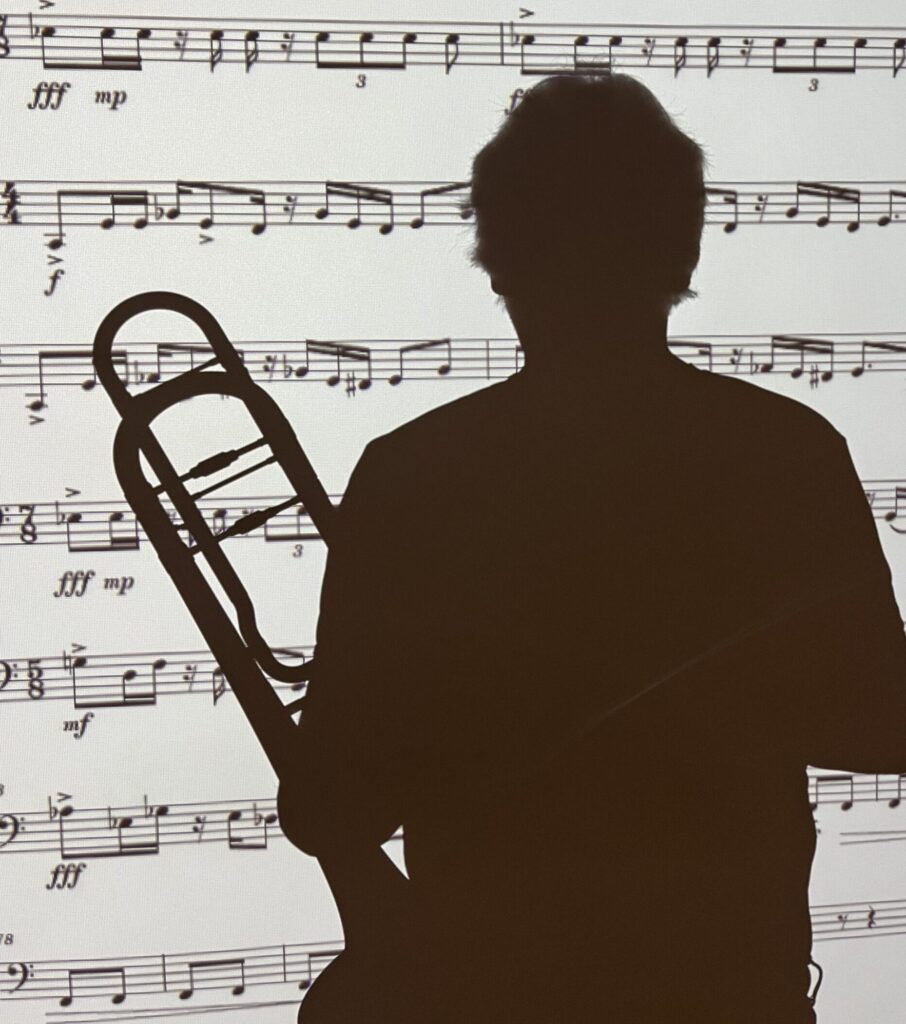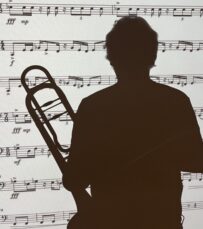
About Me
Rob is Reader in Music at the University of Hertfordshire, a composer working in interdisciplinary practices and a founder member and co-leader of the ArtSci Lab.
He has been active as a composer involved in concert hall and installation art since the 1990’s. His works have been commissioned by many of the worlds leading festivals including the St Magnus Festival, Orkney (Sir Peter Maxwell-Davies), Huddersfield Contemporary Music Festival and Bath International Festival.
Working as a composer, sound designer and programmer, Rob has a passionate interest in how sound behaves acoustically and has developed a number of techniques for controlling and building virtual spaces for use within live performance and installation. As well as creating generative, responsive and interactive installation audio works, he regularly performs live – focusing on a transparent relationship between technology, audience and performer. Performances have included the Huddersfield Contemporary Music Festival and Kings Place. Rob is part of the collaborative team with Simeon Nelson and Nick Rothwell producing large-scale audio-visual sculptures. In 2016 their Wellcome Trust funded project Cosmoscope was presented at the 2017 Durham Lumiere and the 2018 London Lumiere. In 2017 Godman and Nelson were awarded a commission by Modus Operandi (with funds provided by an anonomous donor) to create Hydrosiren – a mobile, floating and singing sculpture. The work traversed its way up and down the Grand Union Canal, near Meanwhile Gardens, London.
Rob is involved in a series of projects with the clarinettist and producer Kate Romano (CEO Stapleford Granary). Most recently they received an AHRC IAA network grant enabling them to record and create video documentation of new William O Smith electroacoustic clarinet reportoire. Over this period, Rob worked in collaboration with Harry Cory Wright for the audio visual installation 600 Pieces of Landscape at Stapleford Granary Arts Centre, running from 3rd July to 1st September 2025.
Previously, collaborative work between the pair has included a new realisation and performance of Poeme Electronique by Varese and a companion composition – Faraday Waves, for live sound projection and video (which images created in collaboration with Prof. Stephen Morris, Physics Department, University of Toronto and Sam Jury).
Since the Covid period, field recordings have become increasingly important to his current arts practice as a means of documenting/capturing time unfolding and listening to hidden environments.
In September 2025, a new audio-visual work with glassmaker Colin Reid will be presented at Tout Quarry, Portland. ‘One Island – Many Visions‘ is an exhibition presented by a group of artists who are members the Royal Society of Sculptors. Sonograms from sound files of the call of a wren are placed into a solid block of optical-quality glass, resulting in a delicate 3D image inside the glass evocative of the original sound, accompanied by a soundscape using the same source.
For linear film, he has composed the sound for Kamila Kuc’s Batum, Uchronia No.1 and Noonwraith Blues. In collaboration with Sam Jury, co-lead of the ArtSci Lab, he has produced music and sound design for To Be here (AHRC Research in Film Awards 2018) and This you must remember (2020/22 – premiered as a multi-screen/speaker installation at Depo İstanbul and KCB, Belgrade). The latter features hybridised music and sound design compositions, whereby environmental sounds (on-camera, native speakers of Abkazia and field recordings) are used as structural musical devices.
Created in collaboration with Dr. Giampaolo Martinelli, Consultant Cardiothoracic Anaesthetist at Bart’s Hospital, London, Pulse is a research project examining and documenting ambient sound – room tone and associated noise, surgical paraphernalia and human interaction found within an operating theatre. High resolution unedited real-time audio recordings of various cardiac procedures have been made and then presented as audio installations (galleries, conferences etc.), aiming to demystify this largely hidden normality as it unfolds during the day.
He contributed a chapter for the Companion to the Reception of Vitruvius (co-edited by Prof. Ingrid Rowland, Brill Publications). Published in Spring 2024, the topic of the contribution was “Echeia” – a very early example of assisted resonance in Roman Theatres.
He has a long list of awards ranging from The Royal Philharmonic Society Prize for Composition to many ACE funded commissions.
